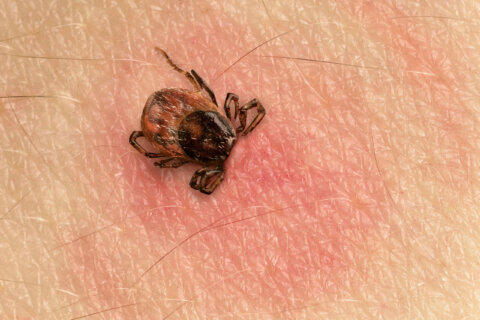WASHINGTON — Summer ushers in longer, warmer days that allow for more time lounging by the pool and chasing fireflies at night. But with all of summer’s pros come a few cons — including an increased risk for sunburns and bug bites.
However, a few precautions and preventive measures can help you and your family steer clear of summer’s usual health hazards. Here are some tips from the experts:
Sun safety
The best way to treat a sunburn is to prevent one, said Dr. Scott Litin, editor of the fifth edition of the Mayo Clinic Family Health Book. But if you find your skin is pink and painful at the end of the day, there are some things you can do to alleviate the burn. Litin recommends applying a cold compress directly to the affected area (a washcloth soaked in cool water works just fine) and keeping the burn hydrated with aloe vera.
And as tempting as it may be to peel the skin away as it blisters, Litin said leave it alone.
“That blistered skin is there for a purpose; it’s there for protection,” he added.
When it comes to selecting the best sunscreen for your family, the Environmental Working Group’s 2018 Guide to Sunscreens can help. The annual resource rates more than 200 sunscreens based on the UVA and UVB protection they provide, plus the ingredients they contain.
“Not all sunscreens are made equally … People think that if they pick up a sunscreen product, it meets the same criteria as the one beside it, and that’s not the case,” said Nneka Leiba, director of Environmental Working Group’s Healthy Living Science program.
A top tip of hers: When you’re face-to-face with all the options out there, just remember a bigger number isn’t always better.
“That SPF number actually only refers to how well that product protects against UVB rays, so how well it protects against the burn factor, but it doesn’t give an indication as to how well it protects against UVA rays,” said Leiba, who added that UVA rays can also damage the skin.
Plus, high SPFs (think 100 or more), often cause a false sense of security. Users are less likely to reapply throughout the day and seek shade when possible.
Leiba recommends looking for a sunscreen with an SPF between 15 and 50. And while spray sunscreens are convenient — especially when applying to wiggly children — Leiba said they are not as effective as lotions, since it’s easy to miss areas.
“Experts recommend that if you use a spray, you really should spray it in your hand first, and then apply it,” Leiba said.
At the end of the day, sunscreen is just one tool out of many that can help protect your skin. Sunglasses, hats and sun-protective clothing are also effective.
Ticks
Ticks are another summer annoyance, and Rafal Tokarz, associate research scientist at Columbia University’s Mailman School of Public Health and author of “The Everything Guide to Lyme disease,” said the type of tick that carries Lyme disease, often referred to as the deer tick, is becoming more common, even in areas that were previously unaffected.
If you’ve been outdoors and notice flu-like symptoms and/or a rash — Tokarz said sometimes the rash will present itself in the shape of a bull’s-eye, but not always — see a doctor immediately. Lyme disease is treated with antibiotics, and if caught early, it will clear up in about two weeks. However, if left untreated, it can do serious damage to the heart and nervous system.
If you notice a tick on you or a family member, use tweezers to remove it, said Mayo Clinic’s Litin.
“Attach as close to skin surface as you can (with the tweezers) and gently tug. The tick will release 99 out of 100 times and won’t leave any pieces behind,” said Litin, who added that when he was a kid, burning off a tick with a match was a popular way to get the bugs off.
“(The match method) will occasionally work, but just think if you or I had somebody with a hot object touching our backside: We wouldn’t tend to back into it, we’d probably move forward and that’s what some ticks do. So your best bet is tweezers.”
For prevention, Tokarz recommends conducting daily tick checks, especially if you spend a lot of time outside in areas of low-lying vegetation.
“Studies have shown that it takes a while, maybe even up to two days, for the bacteria (that causes Lyme disease) to be transmitted, so if you remove the tick promptly, more often than not, you will not have a problem,” he said.
Band-Aids, blisters and more
A well-stocked first-aid kit can help with other common seasonal hazards, including cuts and scrapes from the pool deck and sprained ankles from summer sports.
Litin said make sure you stock up on the obvious, such as bandages, cotton swabs, gauze pads and antibiotic ointment, but also include cortisone cream to treat bee stings and bug bites. Another big one that’s often left out is aspirin.
“And aspirin is really in the first-aid kit in case somebody in your party or a neighboring party might be having a heart attack,” Litin said.
“The recommendation is for somebody who is having chest pain, it could a heart attack, to chew an aspirin. It acts as a blood thinner on the platelets and decreases the plug in the artery that could cause more damage to the heart muscle.”
Tweezers (for ticks, splinters and other small objects), an instant cold pack and a compression wrap for sprains should also be included. And if you’re hitting the road for a summer vacation, don’t forget to throw the kit in the car.







